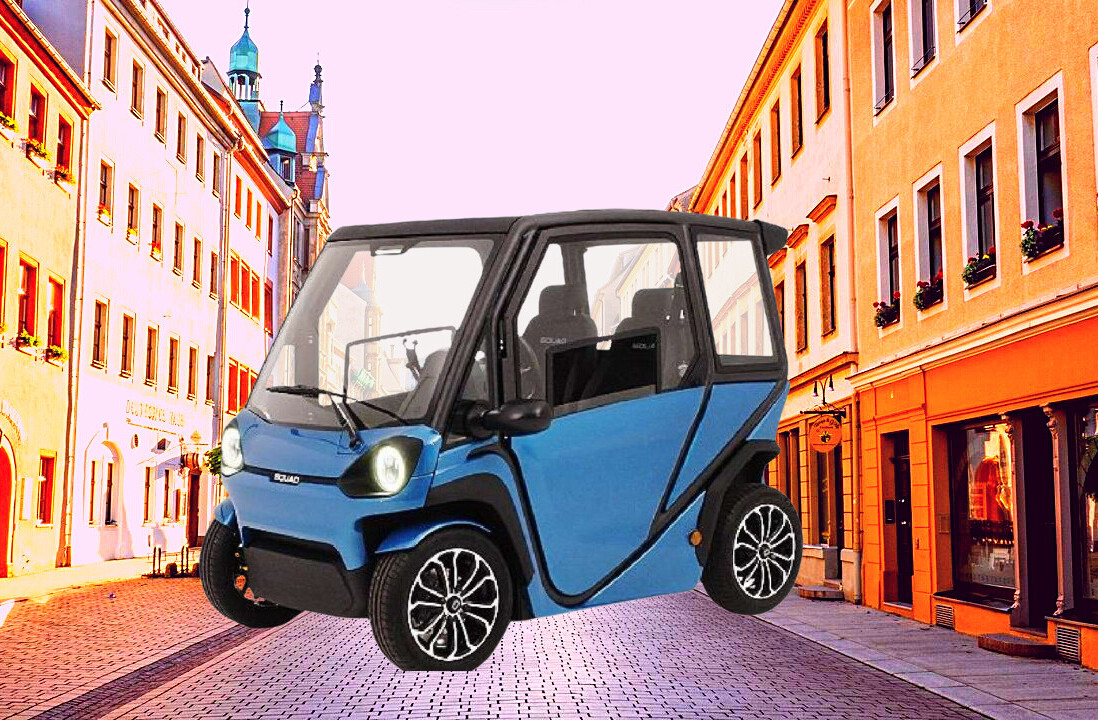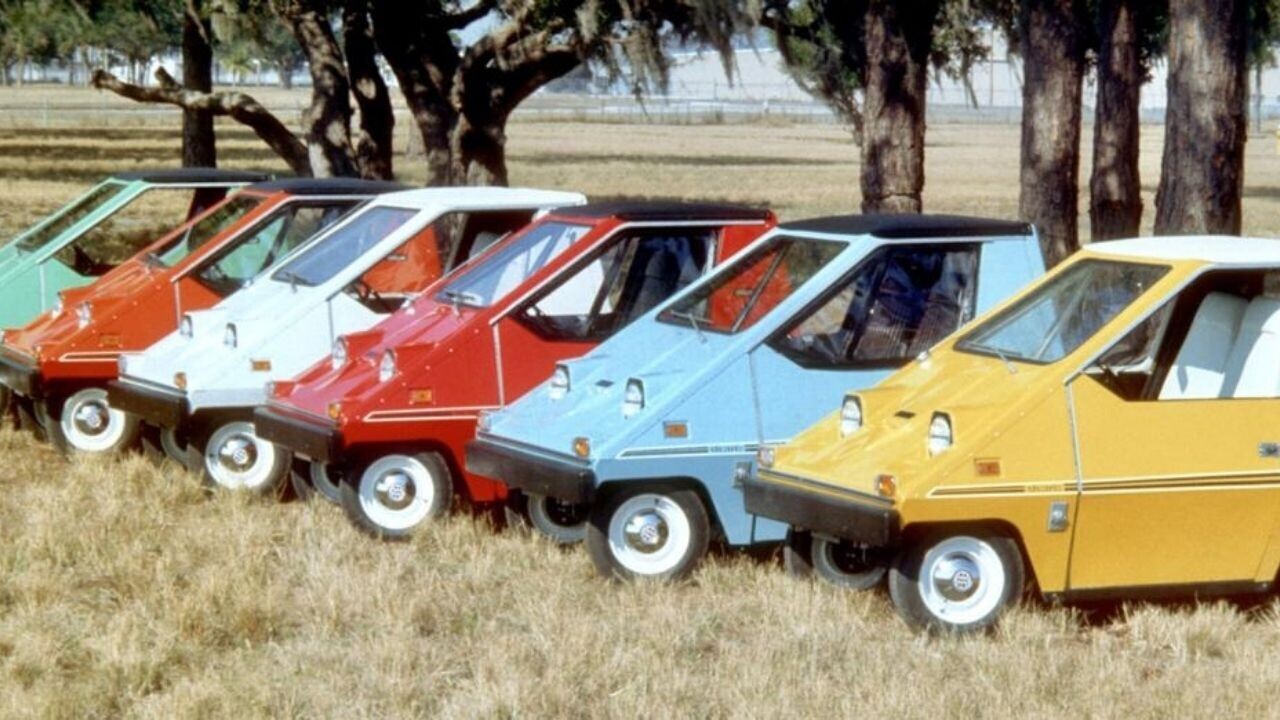
Did you know SHIFT is taking the stage this fall? Together with an amazing line-up of experts, we will explore the future of mobility during TNW Conference 2021. Secure your ticket now!
The World EV Day is upon us — YAY — thanks to the folks at Green.TV, a media company that focuses on clean teach and sustainability stories.
What better way to celebrate this day than with a dive to the past! Electric vehicles are all about shaping our future, but let’s take a moment here to appreciate the historic CitiCar, which was years ahead of its time.
Let me take you back to May 30, 1974, when the new electric CitiCar was demonstrated in the streets of Sebring, Florida. And let me also show you the amazing original footage:
I simply love this ad. It’s so vintage and futuristic at the same time. And now that I think about it, the CitiCar was pretty top-notch for the 1970s.
How it started
In the 1960s, a car salesman by the name of Bob Beaumont decided that he was fed up with the oil consumption required by our gas guzzler-based transportation system. So, he sold his dealership and committed himself to creating an electric vehicle with popular appeal.

The result was the CitiCar, which was designed and produced between 1974 and 1977 by Sebring-Vanguard, a Florida-based company founded by Beaumont.
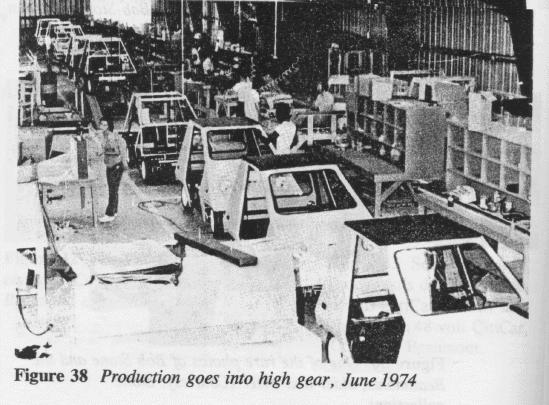
Inspired by Club Car’s golf cart, the CitiCar was a micro vehicle intended to be a small people mover. Or a “mini urban commuter” as we would call it today.
The classic EV came in three models, which are easily identifiable by the flat vertical lines in the front and the back, as well as the flat roof. Throughout its short life, it served as a two-seater, two-door vehicle.
The SV/36
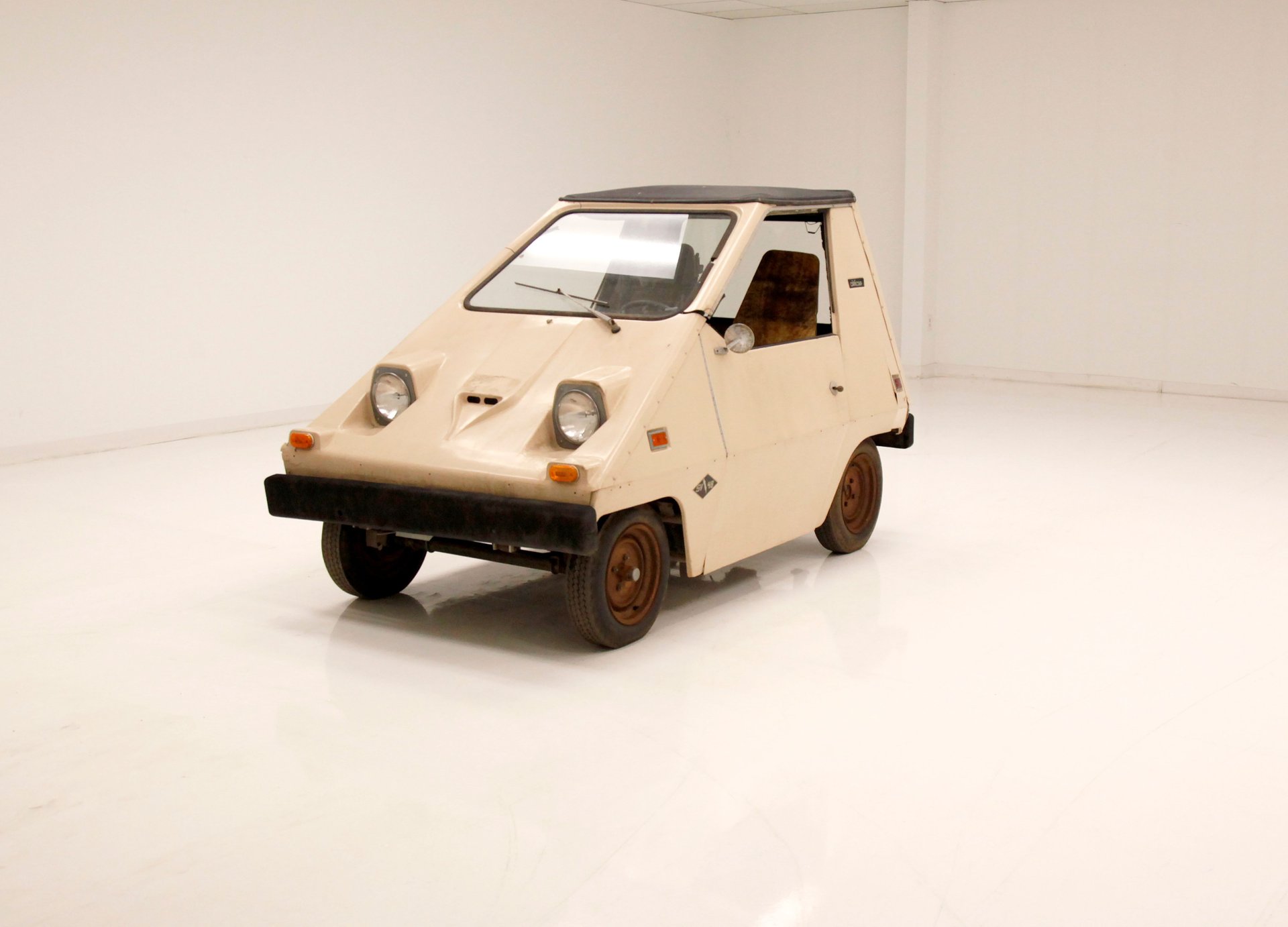
The SV/36 made its debut at the 1974 Electric Vehicle Symposium, held in Washington, D.C.
It featured a six-pack of 36V batteries and a 1.9kWh motor, reaching a range of around 56km. It also came with 2.5 horsepower and claimed a top speed of about 45km/h.
The SV/48
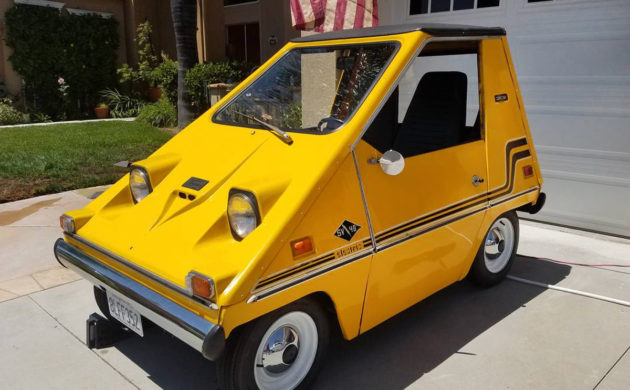
Shortly after the SV/36’s launch, the CitiCar got upgraded to the SV/48, which was an improved version in terms of power and performance.
The SV/48 had an eight-pack of 6V batteries and a stronger 2.6kWh motor. This gave it a longer range of approximately 64km and a better speed of around 61km/h with an increased 3.5hp.
Through 1975, Beaumont built the SV/48 as a roadster.
The 1976 1/2 model

Beginning in 1976, Sebring-Vanguard started building a modified version known as the Transitional or 1976 1/2 CitiCar.
The most significant change was the improved drivetrain with a 6 hp, 4.5 kWh motor. Also, the motor was moved to the front of the axle.
Design-wise the body was changed slightly to incorporate heater inlet vents on the side of the vehicle and full side doors with sliding windows. Plus, the back window on this model opened like a hatch for easier access to the rear storage area.
How it ended
Between 1974 and 1977 about 2,600 CitiCars were produced, interestingly making Sebring-Vanguard the sixth bigger auto manufacturer in the US behind GM, Ford, Chrysler, AMC, and Checker Motors Corporation.
Priced at $3000 the EVs were cheaper than the average gas-powered cars at the time and sold pretty well.
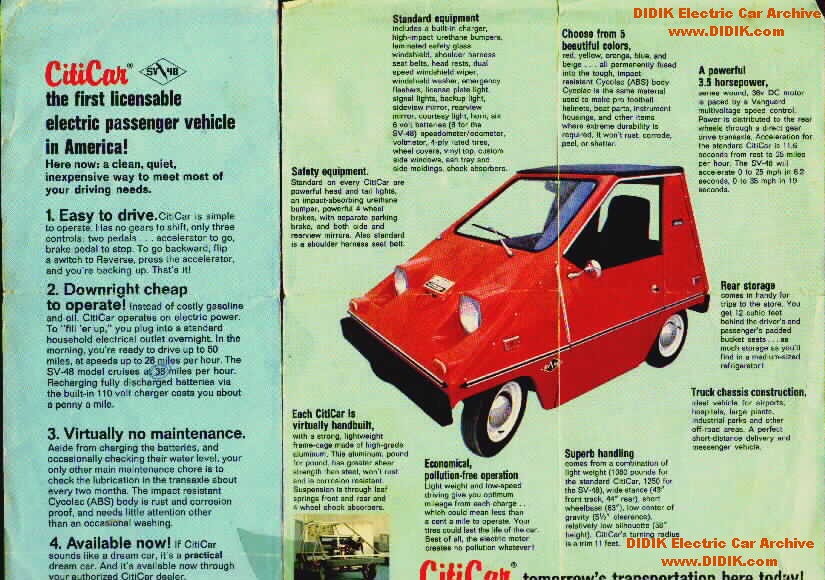
But after the 70s oil crisis got resolved, sales of the CityCars dropped, the company declared bankruptcy in late 1977, and was sold at an auction.
Frank Flowers of Commuter Vehicles Inc. purchased most of the production line and parts of the Sebring-Vanguard company. They redesigned the vehicle and named it the ComutaCar. The improved vehicle was produced from 1979 to 1982.
Back to the present
So what’s the moral of the CitiCar’s story?
Conclusion number one: EVs have been relevant for a long time now. We tend to associate electrical power with imposing current cars that are also smart and automated, and in turn, we tend to forget the long history behind electric vehicles.
In fact, the CitiCar is still an impressive electric automobile, which is well-functioning and efficient if we take into account the limited technology that was available during its time. And that can only show a very promising future ahead.
Conclusion number two: Both the CitiCar and the EV growth explosion that occurs today have been prompted by serious crises. In the first case, the 1973 fuel crisis and in the second, the global climate crisis.
However, switching to a sustainable transport model shouldn’t be a matter of forced necessity, but rather a proactive and provident decision.
HT – The Atlantic, Classic Car History, Didik
Do EVs excite your electrons? Do ebikes get your wheels spinning? Do self-driving cars get you all charged up?
Then you need the weekly SHIFT newsletter in your life. Click here to sign up.
Get the TNW newsletter
Get the most important tech news in your inbox each week.


